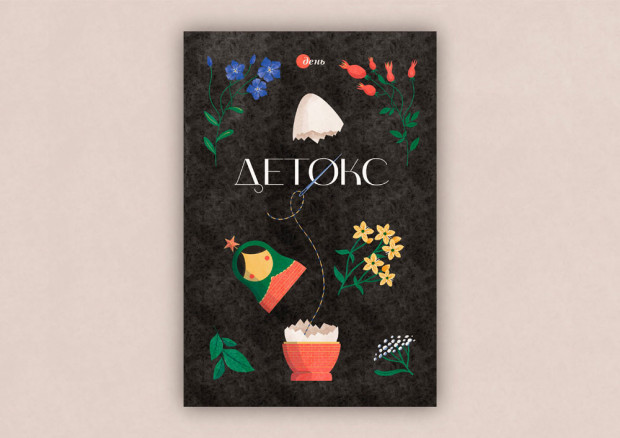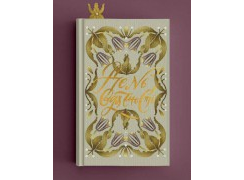TAX ON GAWKING

Since all civilized humanity, especially the Ukrainian people, aims to build a consumer society, it stands to reason that a sagacious choice of the best and most prestigious (also historically justified by relying on past experience) entertainment should be among the pressing needs of the man in the street — in a word, the best the amusement industry can offer.
Unfortunately, this choice is limited by lack of information, so the consumer has to be content with a limited number of amusements.
However, a comprehensive approach to the problem makes it clear that the notion of entertainment is not reduced to just so many traditional pastimes.
Entertainment includes gambling (cards, races), sports, the movies, circus, drama, fashion shows, hobbies (collecting antiques and gems), art, cooking, etc.
It is a world as insane as that of a businessman, a world rich in temptations, teaching the consumer to distinguish between crudely forged and genuine amusements, that smuggling them discredits the lofty idea of the art of consumption.
* * *
Fairs became a popular means of societal intercourse in the Middle Ages. They were organized with the most active participation of monasteries, especially on holidays, because on such occasions monks would take in considerable revenue, and each fair was levied a special high tax.
To stage as many amusements as possible, a fair would include shows by magicians, acrobats, tamed beasts, craftsmen, street orators, clowns, puppet shows, hopping contests, rope-walkers, dances, trained monkeys, and “operators” selling ointments, potions, magic cures; to attract customers, jobless actors would be hired to act out farces attracting scatterbrains to all those crooks with their merchandise.
* * *
Fairs sired most remarkable inventions and customs: beginning in 1382 races of harlots and men in Vienna (the winner was awarded a length of velvet); rhinoceros show and the first coffeehouse in Paris; the sale of wives, whose husbands were fed up with them, in England (at the time certain writers considered a rise in bids for such women as evidence of evolving civilization); usually a man would bring his wife to the market square with a rope around her neck, to the place where cattle were sold, tie the end of the rope to a post and put her up for sale in the presence of a sufficient number of bystanders as witnesses; the highest bidder (more often than not a widower or bachelor, and the starting price was set by a bailiff) received the woman who was from then on considered his legal wife; selling girls at a kind of auction in Germany (the most “precious” went to the highest bidder, becoming his dancing partner for the rest of the year or the day of the patron saint); in India, the city of Tarnetar became the main venue of a brides’ fair in August- September, commemorating the legendary wedding of Arjuna and Draupadi; August 1 marked the Lammas Day (Loaf Mass Day) celebrated in the British Isles, particularly in Scotland and Ireland where fairs were held and temporary (trial) marriages were consummated, lasting a year and a day.
* * *
In Ukraine, the Epiphany Fair began on January 6, lasting 20 days, followed by those of the Holy Trinity, Holy Spirit, Dormition, and Protective Veil, lasting between fifteen and twenty days (so that, in 1779 alone, a total of 271 fairs took place in Kharkiv province).
Fairs were perhaps the favorite event in the Ukrainian peasant’s monotonous life. Long before dawn the peasants would leave their villages, walking or riding in carts, forming long caravans headed for the fair where they would do business and have fun. The fair was the venue of important business meetings, new acquaintances, invitations to celebrations of patron saints’ days or family parties; it was there that lords invited peasants to settle in his sloboda, a special settlement exempted from the taxes for a certain period. For this purpose a lord would dispatch his people laden with food and bottles of vodka. They would arrive at the fair and drive a post in the ground with a note stating the terms and conditions and advertising the arrangement. At the fair announcements were made about crimes, giving suspects’ description, and so on.
Kyiv’s contract fairs set the whole city astir, filling it with visitors, as every such fair meant not only making contracts, but also a place of all kinds of entertainment for the lords. The latter would each bring several barrels of gold and silver coins; trade went on feverishly, the lords would spend hefty sums buying whatever they liked without even haggling. Every such contract fair was also a school of aristocratic manners; here marriages were negotiated, deals made, and estates lost and won at cards. And there was, of course, much alcohol.
As the contract fairs thrived, Kyiv’s Kontraktova Ploshcha [Contract Square] was swarming with landlords, szlachta nobility, merchants, all kinds of functionaries, Eastern Orthodox and Roman Catholic clergymen, army officers, and the rustics speaking different languages. There were vendors’ stalls and booths with posters advertising perfumes, dyes, announcing concerts, operatic performances, vaudeville; and marketplace shows with trained animals. Chok sold anchovies; silverware could be purchased at Norblin & Verner Bros., painted lithographs at Morsicani’s, china at Miklaszewski’s; Italian sellers offered valuable paintings and prints; a butcher displayed his homemade Potter, a tobacconist an exotic Turkish woman’s portrait, and a barber a scene a la Miris. The taverns were the scenes of pitched gambling battles, and there was a special inn for the travelers. * * *
Ukrainian fairs sired new creative genres, such as the vertep puppet show, sideshows, and the rayok [lit., small paradise] box with two round apertures, each with a magnifying glass, through which the viewer saw pictures attached to a wooden axle revolving inside; show-booths where farces were played, mainly primitive heroic plays, burlesques, and scenes from daily life; there were also pantomimes, intermezzos, songs, dances, weightlifting acrobats, magicians, and dancing bears. Onlookers were shown various tricks and promised they would see a five-headed calf, a woman-snake, the world’s fattest girl, and so on. Marketplace shows used props and special effects like actors flying over the stage, falling into an “abyss,” transforming into fantastic creatures, with giant snakes slithering, flower beds coming alive, good and evil spirits flying, and of course lighting effects like the sun rising and setting, waterfalls, apparitions, etc.
Hryhory Kvitka-Osnovyanenko wrote in his Yarmarka [The Fair], “It took mothers and wives so much cajoling to talk their beloved fathers and husbands into parting with four rubles for a box at the theater! The former — i.e., mothers — were in better position, as each, summing up the day’s expenses allocated by her husband, would say, ‘Oh, yes, and that damn theater...’ At half past seven in the evening the theater was filling up, carriages riding up to the entrance one after the next, people hurrying up the stairs, maidens rushing to take their seats in the box, so they could make themselves comfortable and watch those entering and taking their seats on the main floor, and not just watch but scrutinize; those lucky enough would soon start exchanging furtive glances with [the men] in the seats. The orchestra would be struggling through the third overture and then get ready for the fourth... Large as the audience turned out to be, all left the theater without much by way of adventure after the performance...”
* * *
The history of entertainment at such fairs is made up of detective stories and official records reflecting creative people’s resourceful struggle against the absolutist bureaucracy, meaning of course the law. And the main reference source is found in police files: the Comedie Francaise, being granted by the king the monopoly right to stage performances, proceeded to fight marketplace shows and achieved its goal in 1707: market shows were forbidden to use dialogues, but they responded by inventing monologue plays, where a monologue would be followed by the next and then the next, with the cast taking turns on stage, one by one; the Comedie Francaise again complained to the king and the marketplace shows were allowed to stage only pantomimes and acrobatic numbers, not plays with any lines; the marketplace shows responded by inventing a new genre: plays with written lines, with the characters appearing on stage and producing rolls of paper from their pockets, displaying his or her lines in large print and then using gestures and facial expressions to act out the lines; on other occasions they would sing and this gave birth to yet another genre, comic opera; now the marketplace shows were faced with another formidable enemy, the Royal Academy of Music with its privileged operatic stage and the only place where musical performances could be arranged in Paris; in response, marketplace shows began to use bands playing popular tunes, with the cast displaying sheets with the couplets and people planted in the audience would pick the familiar tune and sing the couplets; since this singing took place in the audience, not onstage, the police had no grounds to stop the show; plays staged by marketplace shows were markedly risque, even obscene, and that was precisely what attracted the aristocracy, otherwise sharply critical of obscenity; the boxes were filled with nobility, making the comedians richer after every such performance.
* * *
However, fairs showed not only plays for the simple. The author of The History of the Rus’ (Istoriya Rusov) writes, “The Polish government, without bothering to conduct any studies or make inquiries, ordered Hetman Pavliuha to have his head skinned alive, stuffed with buckwheat chaff, and his senior officers to be beheaded, whereupon their heads and the hetman’s stuffed scalp were to be shamed by exposing them to public view in Ukrainian towns. After that order was carried out the heads were impaled and exhibited in Nizhyn, Baturyn, Uman, and Cherkasy, and the hetman’s stuffed scalp in Chyhyryn; later, it was publicly burned at a fair.”
* * *
At one point, however, persecution from the authorities (including ado from the more refined) proved too strong for the marketplace shows to continue adjusting to new circumstances (or maybe they just did not want to any longer), and they vanished from the scene and stopped paying the taxes, leaving behind a number of new genres and works, mostly comedies (there are seven dramatized versions of the Sorochyntsi Fair, including an opera, ballet, and operetta).
* * *
So what is a fair like this actually worth?
Antoine Marie Roger de Saint-Exupery writes in his Citadel that if the Lord deigned to sharpen the Sentinel’s eyes and ears, he would see the truth about the city and would not compare a newborn’s cries with mourning the dead, a fair with a temple, and a block of brothels with nuptial faithfulness; he would become instantly aware of all this as the City.






